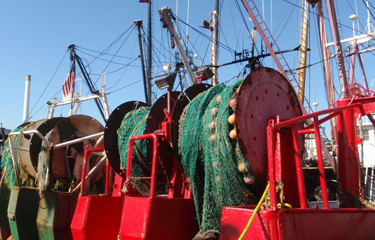NOAA Fisheries report reveals COVID-19 impact on US seafood industry

A report issued by NOAA Fisheries on Friday, 15 January, 2021, shows that COVID-19 had a devastating impact on the country’s commercial fishing and recreational charter operations during the first seven months of 2020.
No U.S. region was spared, as the data shows regional landings revenue since last March fell across the board. Hawaii experienced the worst decline at 42 percent, with the Southeast reporting a 29 percent drop.
“Since March, only one region has posted an increase in monthly landings revenue—Southeast landings revenue for federally managed species was up 2 percent in June relative to 2019,” the report stated.
Capacity restrictions placed on restaurants across the country are largely the culprit for the losses, as indoor dining bans were put in place across the country as well as in nations that import U.S. seafood products in an effort to stem the spread of COVID-19.
The report indicates that landings revenue for such high-priced items as tuna, salmon, and lobsters fell between 30 and 80 percent.
“However, losses are not limited to high-value fisheries,” the report stated.
Further adding to the losses was the fact that many restaurants curtailed their menu options as they offered carry-out or delivery options to stay open. While the report stated grocery store sales of frozen and shelf-stable seafood products grew in the spring, it apparently had little impact, due to the fact that as much as 70 percent of all seafood in the U.S. was consumed at restaurants pre-pandemic.
“In addition, it is unclear what percentage of grocery store seafood sales came from imported product,” NOAA Fisheries stated.
U.S. aquaculture operations were also affected by the pandemic. In the first quarter, 26 percent said they suffered losses greater than USD 100,000 (EUR 83,000). That number grew to 39 percent by the second quarter of 2020. In addition, 45 percent said they had enough cash to survive for three months, with 22 percent claiming they had just one month’s worth.
Charter fishing also felt the brunt of the coronavirus crisis. NOAA estimated that charter businesses in the U.S. Southeast saw revenues drop by 72 percent off their three-year average in March and April. Business did pick up substantially in subsequent months in that region, but Hawaii and Alaska did not see such a rebound.
“In Hawaii, the visitor count is down 99 percent for April to July relative to 2019,” the report said.
Friday’s report was a follow-up to one the agency created last April on the regional impacts. It includes the April assessment as well as economic data from fisheries and considers the USD 300 million (EUR 248 million) aid package the fishing industry received in the CARES Act last March, as well as other COVID-19 relief programs that bill provided.
In December, Congress passed an additional round of USD 300 million funding for COVID-19 disaster relief for the fisheries.
Photo courtesy of NOAA






Share